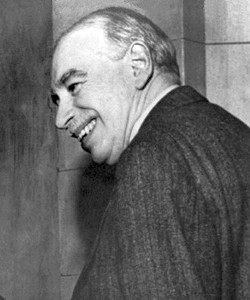Below is a piece outlining how Tower Hamlets Council can use its Pension Fund in conjunction with its reserves to divest from Carbon Extraction and invest in Renewable Energy Infrastructure and thus subsidise public services.
Climate change threatens us and our families’ future. This situation is further worsened by fossil fuel extraction. Without bold action to keep 80% of fossil fuels in the ground, a changing climate will have devastating consequences for people, societies and ecosystems around the world. Therefore as part of the commitment to combating climate change Councils across the UK, as are divesting from fossil fuels from their pension funds (Local Government Pension Scheme – LGPS). Across the UK, council pension funds invest a total of £26.1 billion in oil, coal and gas companies.
Current Status in Tower Hamlets Council
Ethically and environmentally, there is no justification for such holdings. These investments directly undermine Tower Hamlets’ own commitment to 60% reduction in carbon emissions by 2020 (towerhamlets.gov.uk) as they contribute directly to riskier, costlier forms of extraction, while offering poor prospective investment returns as the fossil fuel sector is pushed toward extinction by the rise of cheaper renewable energy sources, like wind and solar.
Tower Hamlets Pensions Committee was advised by external legal counsel at a public meeting in December 2016 that divestment from fossil fuel companies would not contradict its fiduciary duty to pension beneficiaries. Moreover, at a public meeting in March 2017 it was advised by its investment consultants that switching to a fossil fuel-free index for its
tracker funds was unlikely to harm its returns.

Structural Barriers to Pension Funds
Pension funds not just Local Authority funds have not only been divesting from carbon, but have been leading the way in investing in renewable infrastructures (wind, solar, biomass), encouraged by favourable government regulations. However structural issues in the current UK pension fund industry have meant that Pension Funds have not been able to fully exploit such opportunities to make themselves Carbon Free. Due to the risk management approaches of Pension Funds, they can only invest a certain amount in certain funds, and then those funds in return can only invest a certain amount in certain renewable projects. Therefore even though Pension Funds commit to 100% divestment from Carbon to Renewables, it has been very difficult in practice to implement.
Using Council Reserves Investments to make up Shortfall to allow Pension Funds to divest from Carbon and Invest in Renewables
Warrington Borough Council has been one of the few local authorities to lead the way in investing in renewable infrastructure, through an active Treasury Management Strategy of its reserves. Newham Council has recently co invested using its reserves with Pension Funds in a Solar Energy Farm, near Swindon. Such active investments strategy in renewables using Council Reserves not only facilitates Pension Funds to invest in Renewable Infrastructure but give a return to the Council that can be used to subsidise public services.

“The Important Thing for Government is not to do the things which individuals are doing already, and to do them a little better or worse; but to do those things which at present are not done at all.”
John Maynard Keynes, “The End of Laissez Faire” (1926)
APPENDIX 1
Case Study: Illustrative financial returns of an Renewable Infrastructure Investment
The tables below sets out the key parameters for a £50m investment in an infrastructure project funded by borrowing from the reserves at PWLB rate (Public Works Loan Board). Some key features of the investment are set out below:
Tenor: renewable and bio-energy assets are considered finite life in nature (though there may be opportunities to extend them in the long run) and most investors assume a 20-25-year life for these assets. Given that LBTH may fund an infrastructure investment with borrowing from the PWLB, it is recommended that investments are made on a 5-6 year buy and hold period. This would allow LBTH to access lower cost PWLB financing maturing over a shorter term and also exit investments either close to or at a premium to their cost;
Cost of borrowing: based on the 6-year rate for PWLB funding;
Project yield: 6%, based on a conventional renewable energy asset such as onshore wind or solar;
Manager fees: for prudence a deduction of 0.75% has been assumed for fees charged by an investment manager;
Net yield: This represents the residual return available to LBTH after financing an investment and paying an asset management fee; and
Capital appreciation at exit: This represents the potential uplift that could be realised upon exiting the asset. Based on feedback from investment managers, most investments see an uplift in value of 0 – 20% over the first 5-6 years so for prudence a 10% uplift has been assumed.
Key Assumptions
| Size of Investment | £50 million |
| Tenor (years) | 6 |
| Cost of borrowing | 1.9% |
| Project yield | 6% |
| Manager fees | 0.75% |
| Net yield | 3.35% |
| Capital appreciation at exit | 10% |
Infrastructure investment – illustrative cash flow profile
| Year | 1 | 2 | 3 | 4 | 5 | 6 |
| Consideration | (£50m) | |||||
| Annual yield (net) 3.375% | £1.675m | £1.675m | £1.675m | £1.675m | £1.675m | £1.675m |
| Exit Flag | 1 | |||||
| Exit Receipt | £55m | |||||
| Net cash flow | (£48.325m) | £1.675m | £1.675m | £1.675m | £1.675m | £56.675m |
| Cumulative Yield | £1.675m | £3.350m | £5.025m | £6.700m | £8.375m | £10.050m |
| Upside from capital appreciation | £5m | |||||
| Total cash flow generated over investment | £15.050m | |||||
| Internal Rate of Return (IRR) | 5.9% |
The table above sets out an illustrative cash flow profile for a £50m investment in an infrastructure project that is divested at the end of year 6. Based on the assumptions set out above, an annual yield of £1.7m is generated after funding costs and management fees. Together with a 10% uplift in value upon exit, c.£15m could be generated to fund LBTH’s strategic objectives as a local authority. The table below presents an analysis of total cash generated for LBTH by sensitising for capital appreciation and project yield assumptions.
Cash flow generation on £50m investment
| Capital appreciation | Project Yield | |||||
| 5.0% | 6.0% | 6.5% | 7.0% | 7.5% | 8.0% | |
| 0% | 7,050 | 10,050 | 11,550 | 13,050 | 14,550 | 16,050 |
| 5% | 9,550 | 12,550 | 14,050 | 15,550 | 17,050 | 18,550 |
| 10% | 12,050 | 15,050 | 16,550 | 18,050 | 19,550 | 21,050 |
| 15% | 14,550 | 17,550 | 19,050 | 20,550 | 22,050 | 23,550 |
| 20% | 17,050 | 20,050 | 21,550 | 23,050 | 24,550 | 26,050 |
APPENDIX 2
(Please see below full PDF document with Technical Paper – Proposal for a People’s Wealth Fund)


Recent Comments